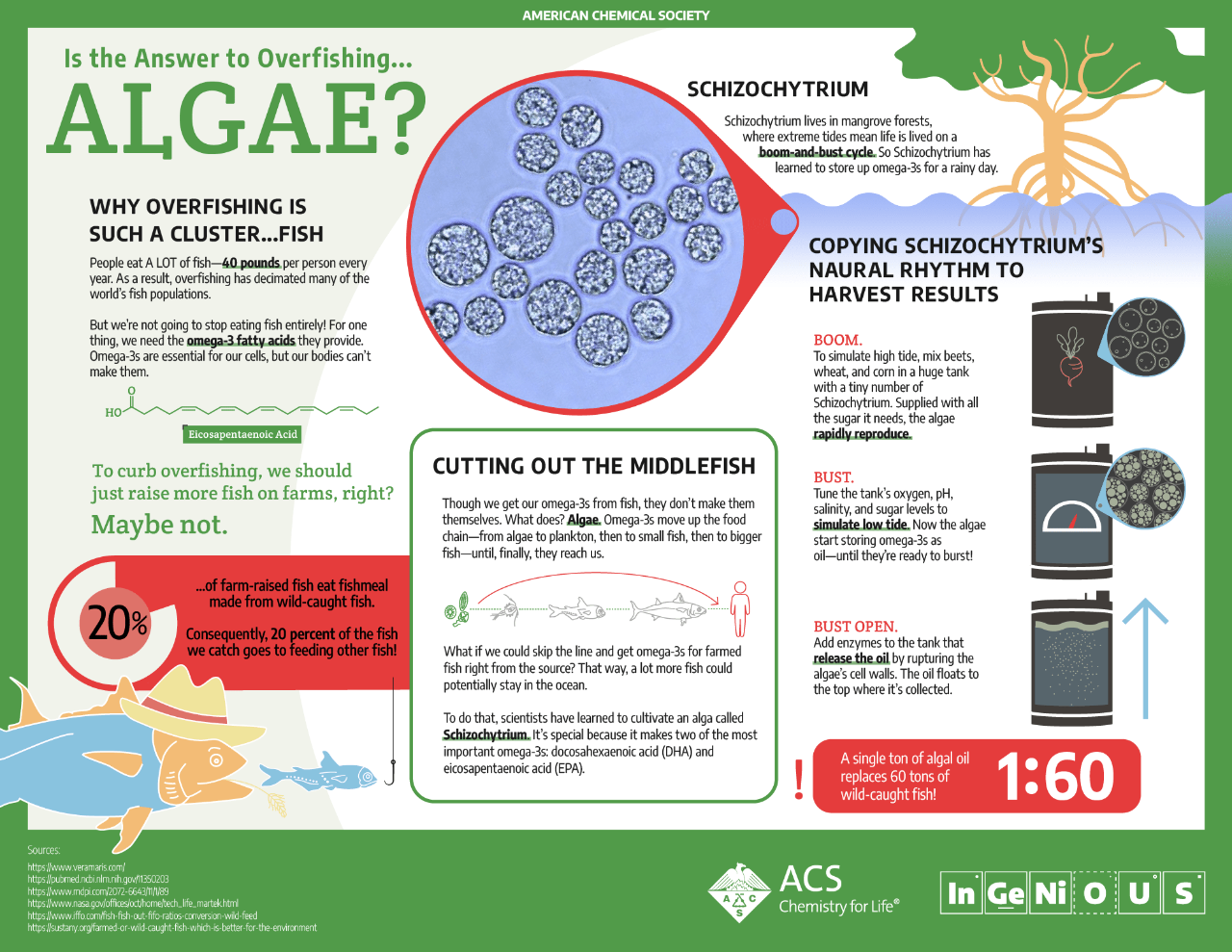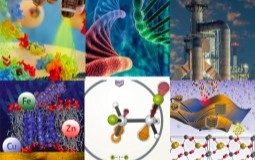Is the Answer to Overfishing . . . Algae?
Why Overfishing is Such a Cluster...fish
People eat A LOT of fish—40 pounds per person every year. As a result, overfishing has decimated many of the world’s fish populations.
But we’re not going to stop eating fish entirely! For one thing, we need the omega-3 fatty acids they provide. Omega-3s are essential for our cells, but our bodies can’t make them.
[caption: Eicosapentaenoic acid]
To curb overfishing, we should just raise more fish on farms, right? Maybe not.
20 percent of farm-raised fish eat fishmeal made from wild-caught fish. Consequently, 20 percent of the fish we catch goes to feeding other fish!
Cutting Out the Middlefish
Though we get our omega-3s from fish, they don’t make them themselves. What does? Algae. Omega-3s move up the food chain—from algae to plankton, then to small fish, then to bigger fish—until, finally, they reach us.
What if we could skip the line and get omega-3s for farmed fish right from the source? That way, a lot more fish could potentially stay in the ocean.
To do that, scientists have learned to cultivate an alga called Schizochytrium. It’s special because it makes two of the most important omega-3s: docosahexaenoic acid (DHA) and eicosapentaenoic acid (EPA).
Schizochytrium
Schizochytrium lives in mangrove forests, where extreme tides mean life is lived on a boom-and-bust cycle. So Schizochytrium has learned to store up omega-3s for a rainy day.
Copying Schizochytrium’s Natural Rhythms to Harvest Results
Boom: To simulate high tide, mix beets, wheat, and corn in a huge tank with a tiny number of Schizochytrium. Supplied with all the sugar it needs, the algae rapidly reproduce.
Bust: Tune the tank’s oxygen, pH, salinity, and sugar levels to simulate low tide. Now the algae start storing omega-3s as oil—until they’re ready to burst!
Bust Open: Add enzymes to the tank that release the oil by rupturing the algae’s cell walls. The oil floats to the top where it’s collected.
A single ton of it replaces 60 tons of wild-caught fish!
Sources:
- https://www.veramaris.com/
- https://pubmed.ncbi.nlm.nih.gov/11350203
- https://www.mdpi.com/2072-6643/11/1/89
- https://www.nasa.gov/offices/oct/home/tech_life_martek.html
- https://www.iffo.com/fish-fish-out-fifo-ratios-conversion-wild-feed
- https://sustany.org/farmed-or-wild-caught-fish-which-is-better-for-the-environment






